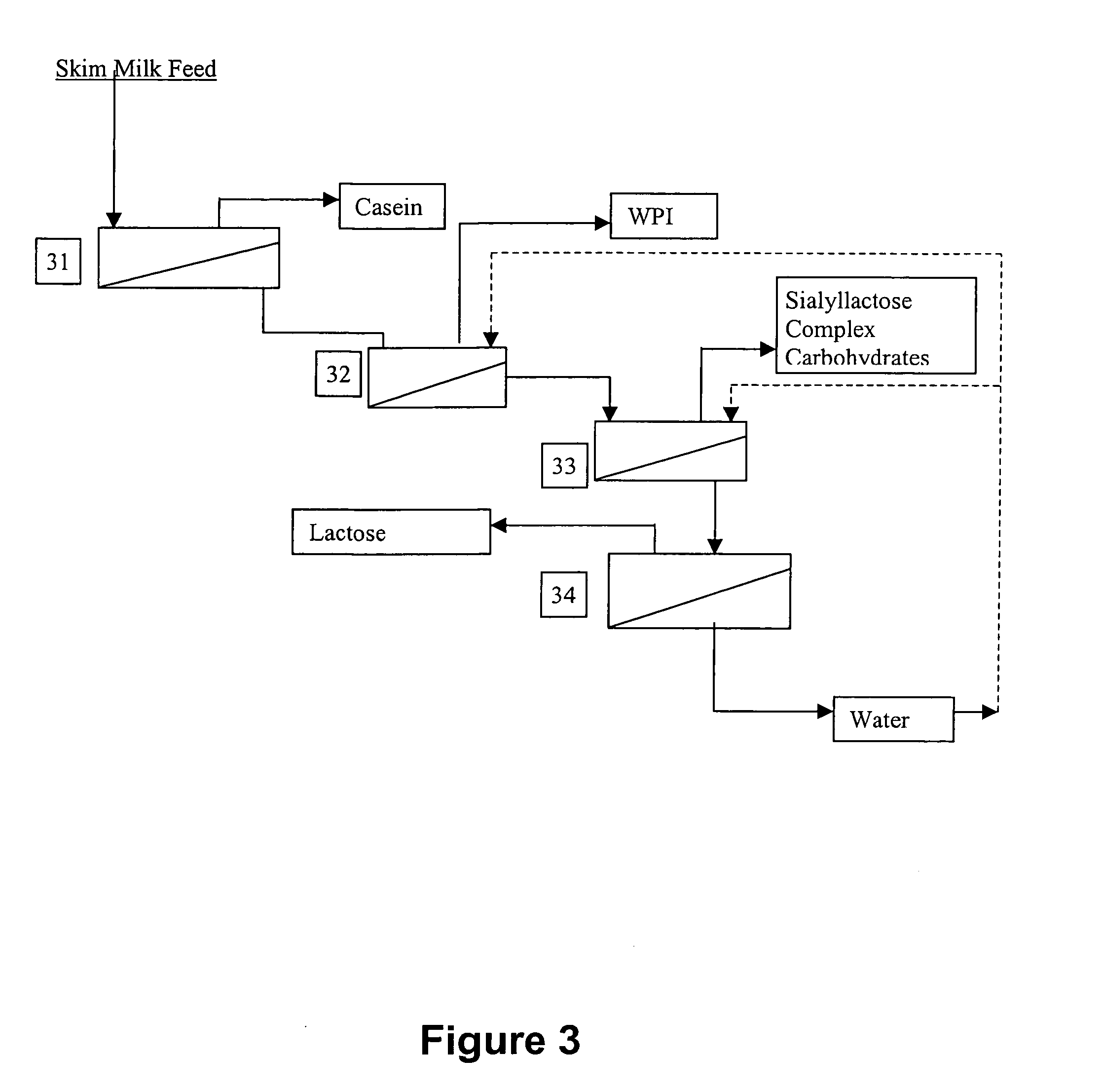Method and apparatus for separation of milk, colostrum, and whey
a technology of colostrum and whey, which is applied in the field of methods and apparatus for separation of milk, colostrum, and whey, can solve the problems of chromatographic separation method that changes the chromatographic separation method is expensive and complex, and the chromatographic separation method undesirably alters the natural quality and character of milk
- Summary
- Abstract
- Description
- Claims
- Application Information
AI Technical Summary
Benefits of technology
Problems solved by technology
Method used
Image
Examples
example
[0242] In a multistage system such as a large scale dairy system employed to separate whey proteins from casein in milk, it is advantageous to utilize a filter module of higher channel height of the same length, or a filter module of the same channel height in a shorter channel length in the latter stage filter modules, to adjust for the increase in viscosity as the casein concentration increases. In this example, it is appropriate to note that the deciding factor, between lowering or raising the channel height, or lengthening or shortening the path lengths of the modules to respectively increase or decrease shear and / or raise or lower pressure drop, follows the guidelines set forth above for operating a single filter module or a single step process.
[0243] The clear advantage to the end user is that the dimensional criteria and algorithmic approaches discussed hereinabove, in application to the filtration modules disclosed in the aforementioned U.S. patents of Henry B. Kopf and the ...
PUM
| Property | Measurement | Unit |
|---|---|---|
| temperatures | aaaaa | aaaaa |
| path length | aaaaa | aaaaa |
| path length | aaaaa | aaaaa |
Abstract
Description
Claims
Application Information
 Login to View More
Login to View More - R&D
- Intellectual Property
- Life Sciences
- Materials
- Tech Scout
- Unparalleled Data Quality
- Higher Quality Content
- 60% Fewer Hallucinations
Browse by: Latest US Patents, China's latest patents, Technical Efficacy Thesaurus, Application Domain, Technology Topic, Popular Technical Reports.
© 2025 PatSnap. All rights reserved.Legal|Privacy policy|Modern Slavery Act Transparency Statement|Sitemap|About US| Contact US: help@patsnap.com



